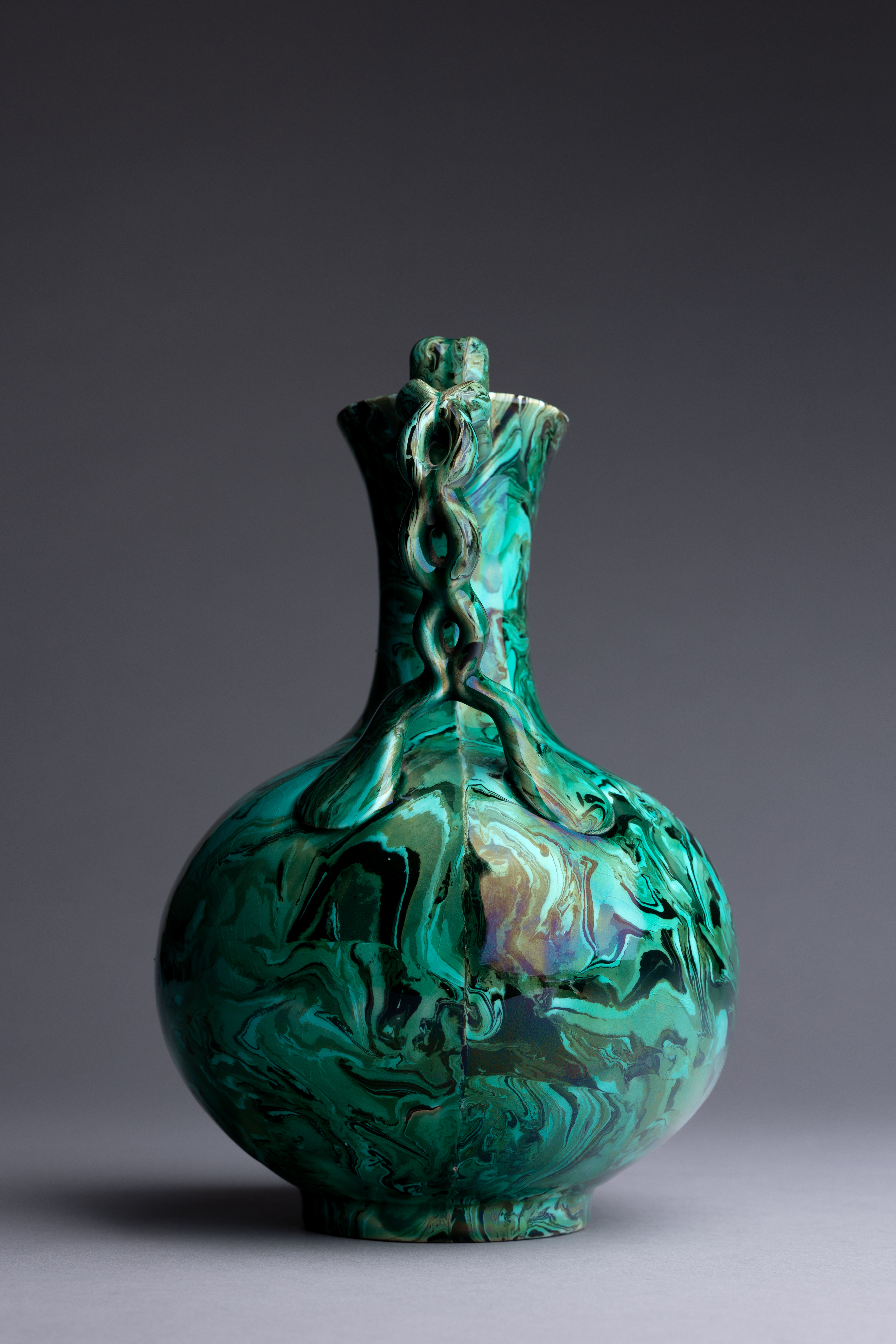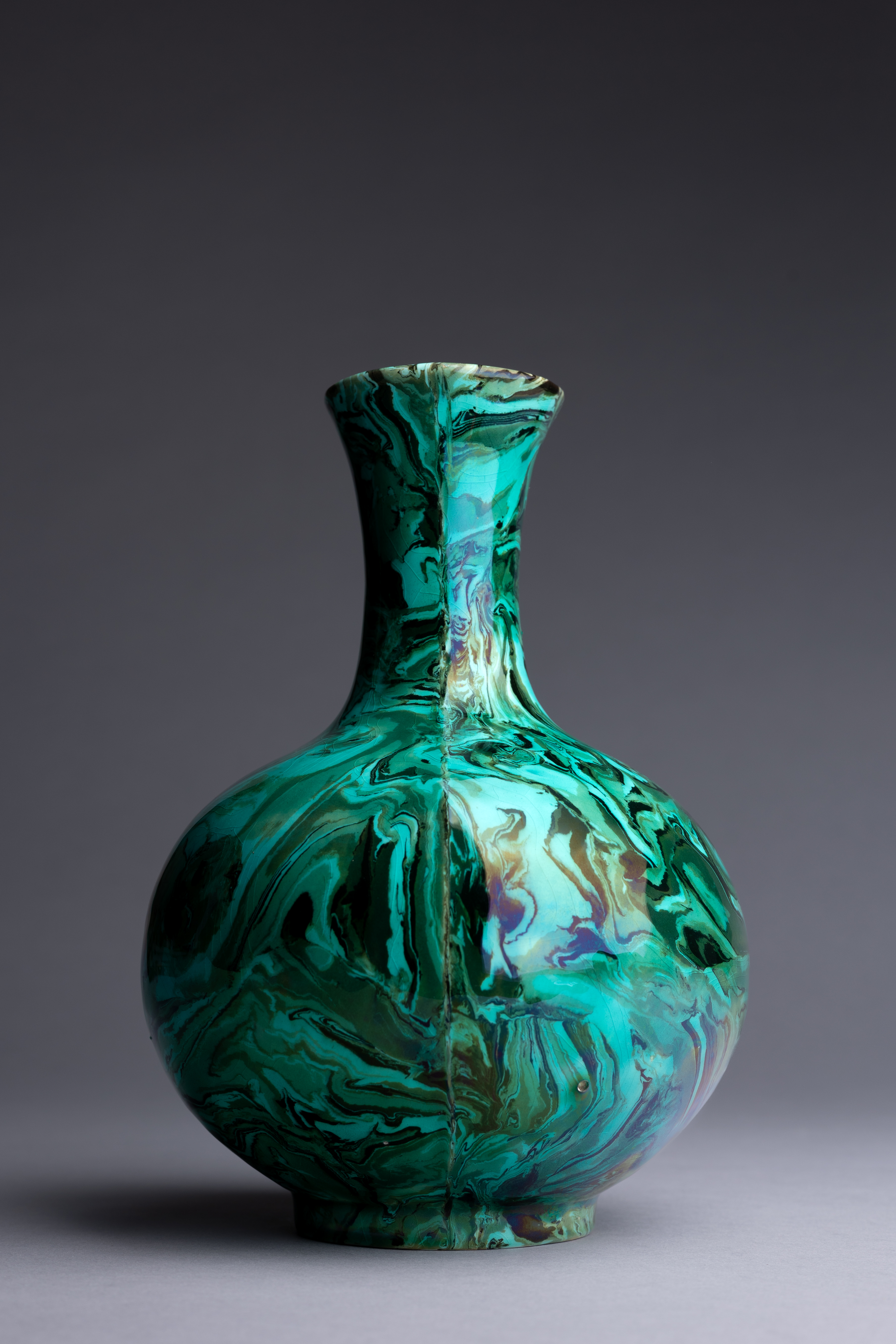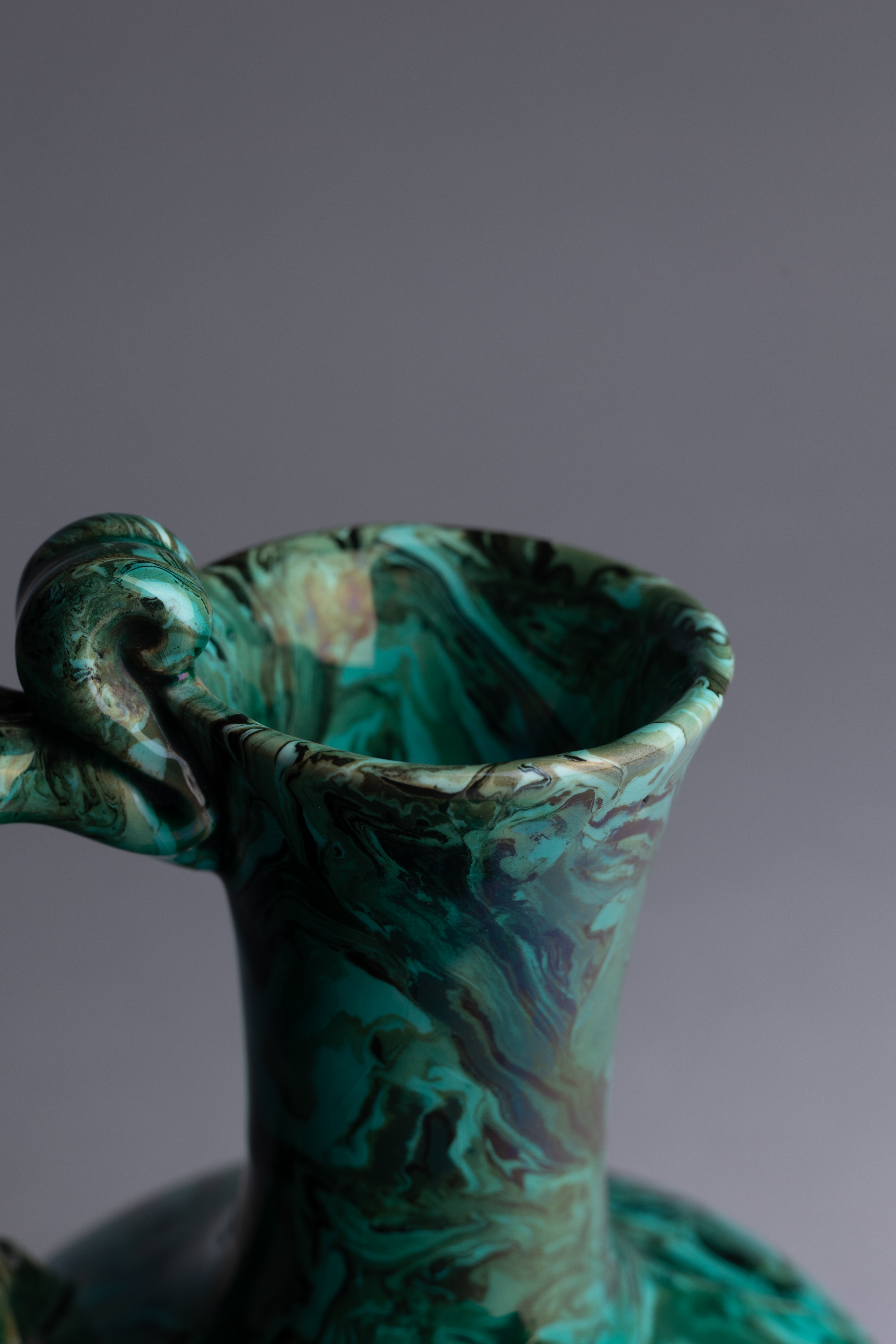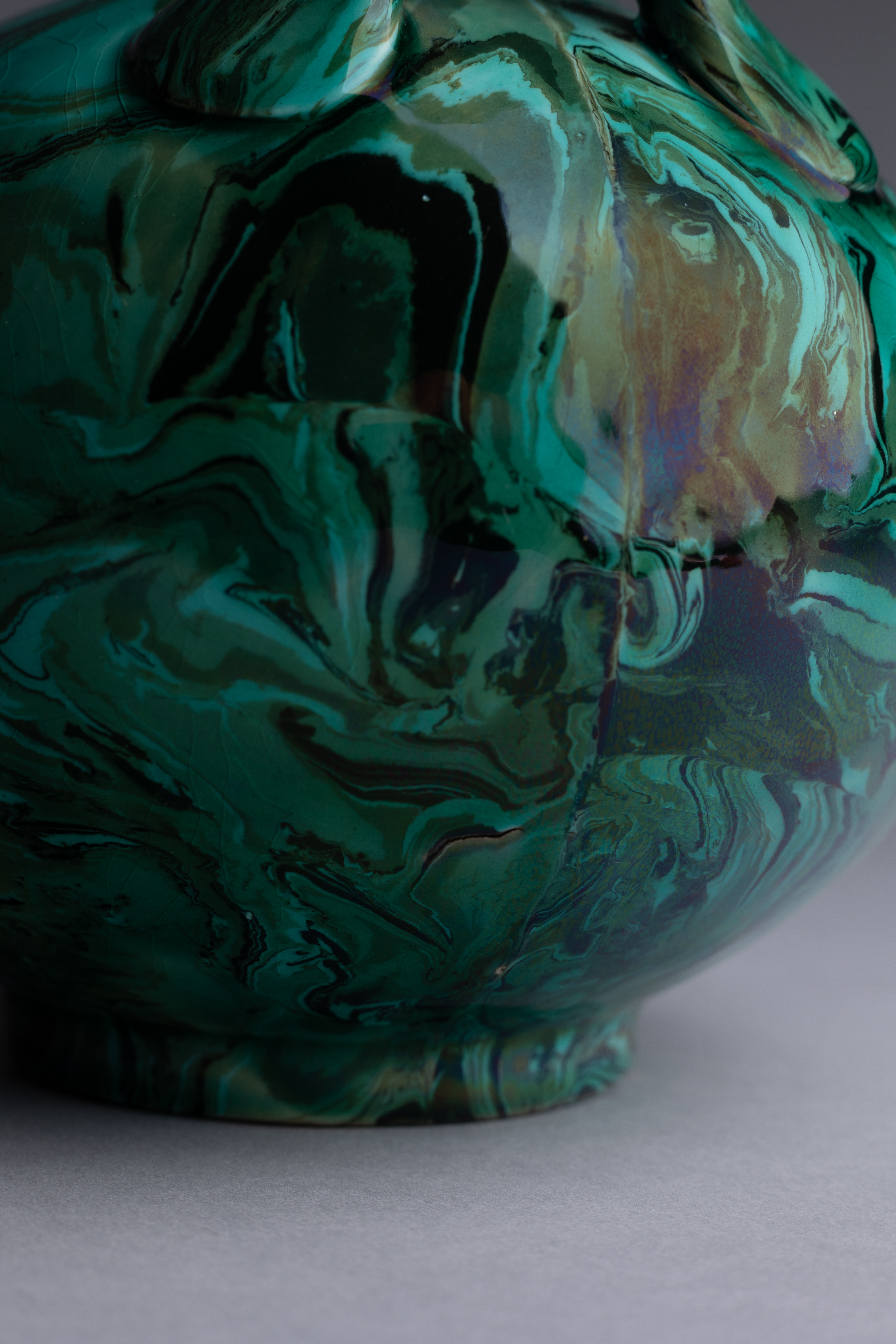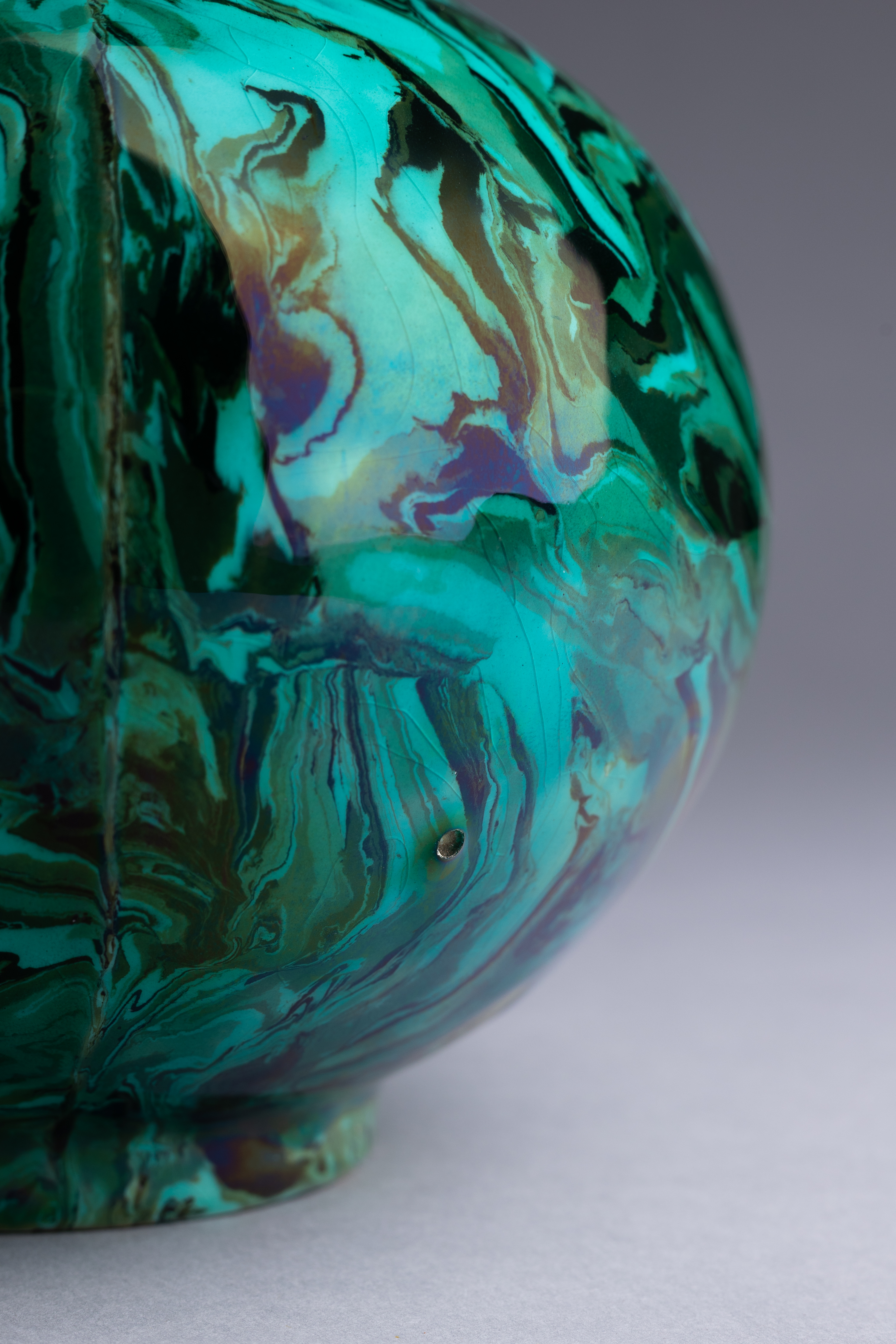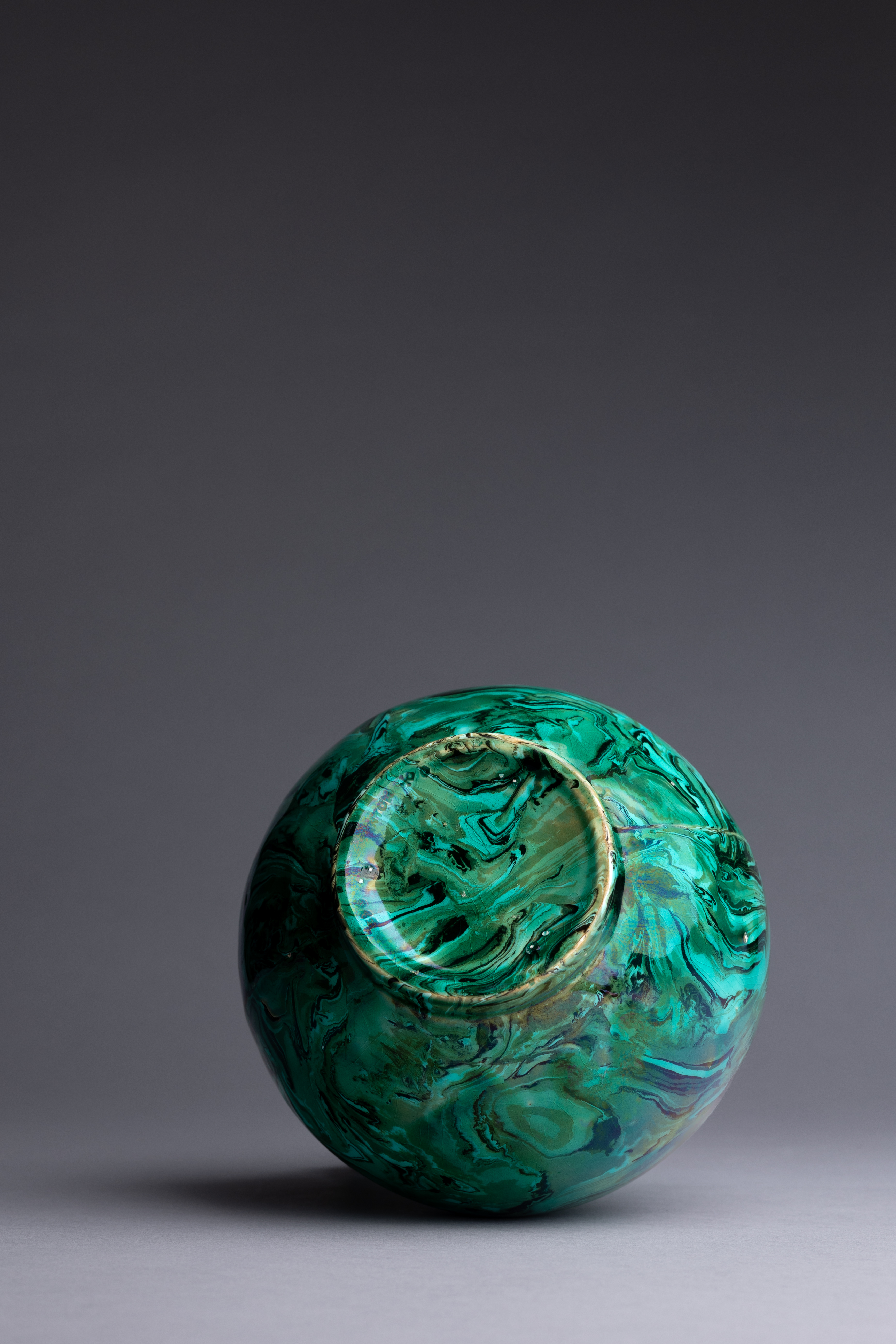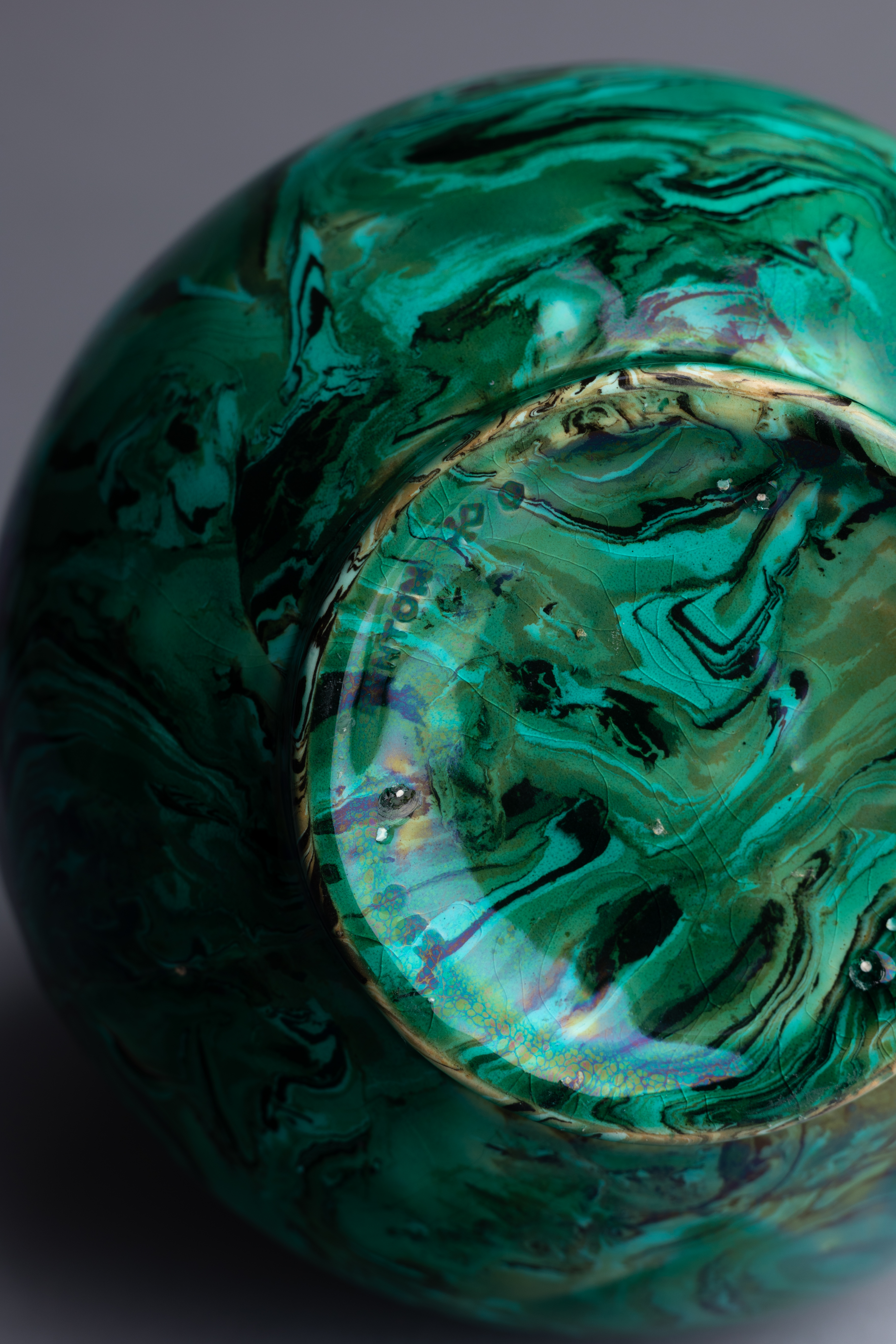The Minton manufactory is credited with the invention of majolica pottery, debuting its creation at the Great Exhibition of 1851 in London. These brightly colored wares in a variety of styles set off a “mania” amongst consumers across England, France, and beyond. With a subtle blending of Classical and natural motifs, this Minton majolica pitcher showcases the factory’s mastery of the medium which captivated audiences in the 19th century and continues to do so today.
Essay
The Minton manufactory is credited with the invention of majolica pottery, debuting its creation at the Great Exhibition of 1851 in London. These brightly colored wares in a variety of styles set off a “mania” amongst consumers across England, France, and beyond. With a subtle blending of Classical and natural motifs, this Minton majolica pitcher showcases the factory’s mastery of the medium which captivated audiences in the 19th century and continues to do so today.
Most majolica pieces are overt in their stylistic references (Renaissance, Victorian, Japonisme). This pitcher is much more subtle in its design, mixing Classical and natural allusions while still retaining a bold visual impact. This particular shape was called ‘Verulam,’ named after an Ancient Roman settlement in Britain. It’s modeled after an oinochoe, an Ancient Greek pitcher used to serve wine. Classical motifs were always popular in Western cultures, as they reinforced a lineage to what was perceived to be the greatest civilizations in history: Ancient Greece and Rome. While the reference to Antiquity is not as obvious here as in Neoclassical objects, this jug shares a similar visual language of a celebration of (and concern with) Western heritage.
The surface of this jug is covered in an exquisite marbled green glaze meant to mimic malachite. Ceramicists often used glazes to mimic the surface of precious and semiprecious materials (see, for example, Wedgwood’s agate and porphyry glazes) in order to produce a luxurious object for consumers. Malachite had long been used on decorative arts in cultures all over the world to demonstrate opulence and wealth. Recently, the Russian and French courts had each created a “Malachite Room” (1830s and 1811) in their palaces to show off their possession and control of a great natural wealth. The sumptuous malachite-like glaze on this jug would have produced a similar effect of luxury, though of course at a lower price point.
BT
Condition
Excellent. Burst glaze bubble on lower body. Fine allover crazing.
For a detailed condition report, please contact us.
Provenance
The Joan Stacke Graham Majolica Collection
References
Karmason & Stacke-Graham Library, KL000303
Published
Susan Weber et al., Majolica Mania: Transatlantic Pottery in England and the United States, 1850-1915, fig. 12.47.
Most majolica pieces are overt in their stylistic references (Renaissance, Victorian, Japonisme). This Minton majolica pitcher is much more subtle in its design, mixing Classical and natural allusions while still retaining a bold visual impact. This particular shape was called ‘Verulam,’ named after an Ancient Roman settlement in Britain. It’s modeled after an oinochoe, an Ancient Greek pitcher used to serve wine. Classical motifs were always popular in Western cultures, as they reinforced a lineage to what was perceived to be the greatest civilizations in history: Ancient Greece and Rome. While the reference to Antiquity is not as obvious here as in Neoclassical objects, this jug shares a similar visual language of a celebration of (and concern with) Western heritage.
The surface of this jug is covered in an exquisite marbled green glaze meant to mimic malachite. Ceramicists often used glazes to mimic the surface of precious and semiprecious materials (see, for example, Wedgwood’s agate and porphyry glazes) in order to produce a luxurious object for consumers. Malachite had long been used on decorative arts in cultures all over the world to demonstrate opulence and wealth. Recently, the Russian and French courts had each created a “Malachite Room” (1830s and 1811) in their palaces to show off their possession and control of a great natural wealth. The sumptuous malachite-like glaze on this jug would have produced a similar effect of luxury, though of course at a lower price point.
BT
Excellent. Burst glaze bubble on lower body. Fine allover crazing.
For a detailed condition report, please contact us.
The Joan Stacke Graham Majolica Collection
Karmason & Stacke-Graham Library, KL000303
Susan Weber et al., Majolica Mania: Transatlantic Pottery in England and the United States, 1850-1915, fig. 12.47.
This item ships free to the continental US, and globally for a flat-rate fee of $100.
All objects are packed with utmost care by our team of expert fine art shippers. All items are shipped with parcel insurance.
For more information on our shipping policies, please visit our FAQ Page.


